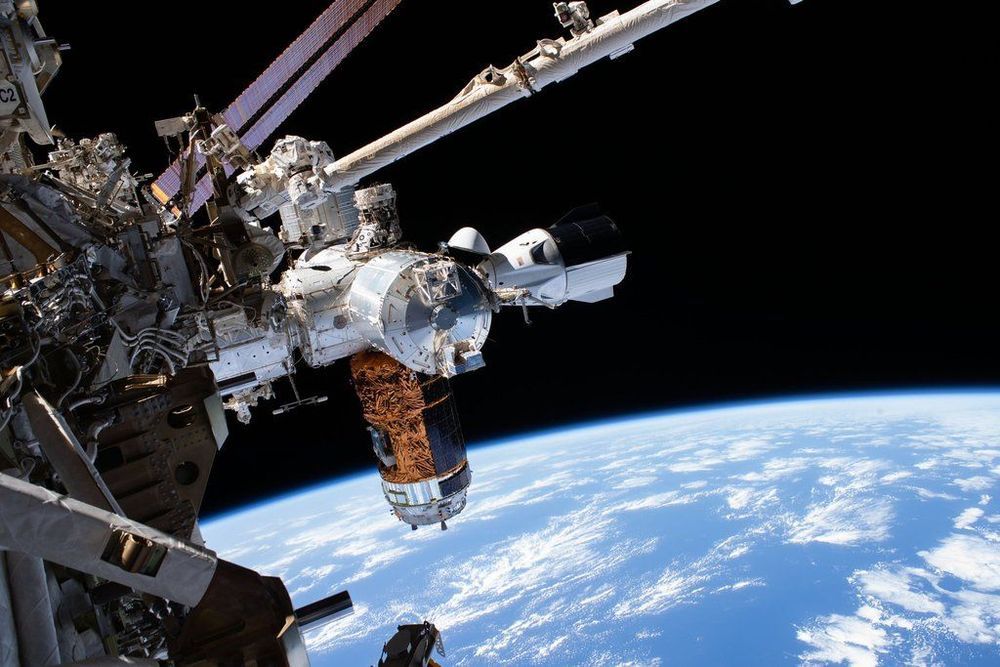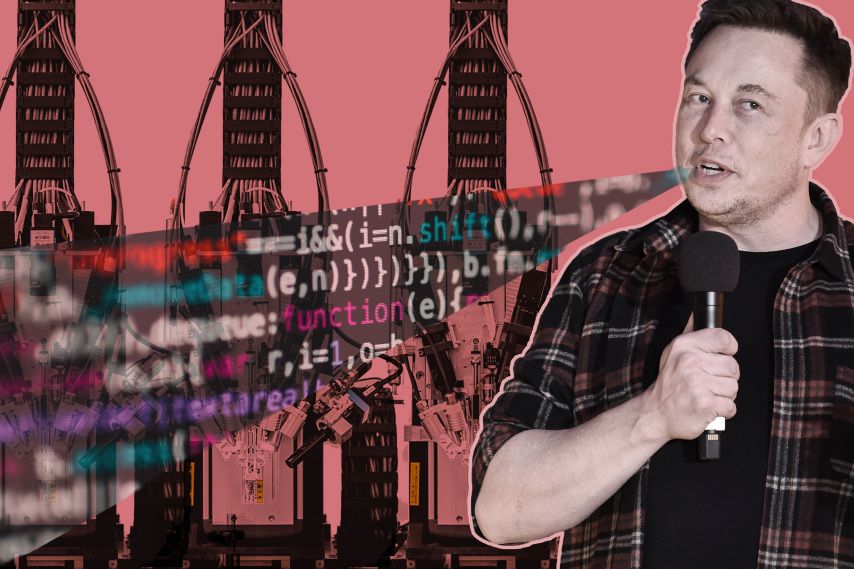A 20-year project to reintroduce the species across the peninsula has seen their numbers rise to 855.



SpaceX launched its first crewed mission to ISS in May this year. The company demonstrated its spacecraft is safe and reliable to carry humans to space and back. Axiom’s space tourist mission with SpaceX is scheduled to be a 10-day journey that will launch civilians aboard Crew Dragon to the space station atop a Falcon 9 rocket. The space tourists will stay at ISS for 8 days, where they will experience microgravity and amazing views of our planet.
SpaceX’s first private civilian flight will carry three Axiom customers who will fly alongside former NASA Astronaut Michael Lopez-Alegria, he will be commander during the mission. Earlier this year, NASA and SpaceX announced Hollywood actor Tom Cruise will film a movie at the space station and fly aboard Crew Dragon. Then, reports surfaced about Cruise and his film production agency working with Axiom is responsible for providing ‘training, mission planning, hardware development, life support, medical support, crew provisions, hardware and safety certifications, on-orbit operations and overall mission management.’ However, Axiom has not officially disclosed who their private passengers will be on their first mission in collaboration with SpaceX.

Microsoft, in collaboration with MITRE research organization and a dozen other organizations, including IBM, Nvidia, Airbus, and Bosch, has released the Adversarial ML Threat Matrix, a framework that aims to help cybersecurity experts prepare attacks against artificial intelligence models.
With AI models being deployed in several fields, there is a rise in critical online threats jeopardizing their safety and integrity. The Adversarial Machine Learning (ML) Threat Matrix attempts to assemble various techniques employed by malicious adversaries in destabilizing AI systems.
AI models perform several tasks, including identifying objects in images by analyzing the information they ingest for specific common patterns. The researchers have developed malicious patterns that hackers could introduce into the AI systems to trick these models into making mistakes. An Auburn University team had even managed to fool a Google LLC image recognition model into misclassifying objects in photos by slightly adjusting the objects’ position in each input image.

If humans want to travel about the solar system, they’ll need to be able to communicate. As we look forward to crewed missions to the Moon and Mars, communication technology will pose a challenge we haven’t faced since the 1970s.
We communicate with robotic missions through radio signals. It requires a network of large radio antennas to do this. Spacecraft have relatively weak receivers, so you need to beam a strong radio signal to them. They also transmit relatively weak signals back. You need a large sensitive radio dish to capture the reply. For spacecraft beyond the orbit of Earth, this is done through the Deep Space Network (DSN), which is a collection of radio telescopes custom designed for the job.
The only major crewed mission we currently have is the International Space Station (ISS). Since the ISS orbits only about 400 kilometers above the Earth, it’s relatively easy to send radio signals back and forth. But as humans travel deeper into space, we’ll require a Deep Space Network far more powerful than the current one. The DSN is already being pushed to its data limits, given the large number of active missions. Human missions would require orders of magnitude more bandwidth.

In a recent study of the upper atmosphere of Venus, finding the chemical fingerprint of phosphine has led to speculation that it may be tied to airborne life high in the clouds of our sister planet [1]. We harbour similar suspicion of microbial life on Mars [2], Saturn’s moon Enceledus [3], and Europa, the icy Galilean of the Jovian system [4]. The dwarf planet Ceres of the asteroid belt could be added to that list also, with recent evidence of oceanic water [5], while more exotic variations of life may exist on Titan, which is known to be teeming with organic materials [6]. Should we be more wary of our Solar System as an environment to explore, and the potential of pathogens we may encounter?
If one rewinds 500 years, to when exploration of new worlds involved sailing the oceans, the discovery of the Americas introduced viruses which decimated the native population at that time [7]. That in itself was far from a unique event in history, of course. There have been many occurrences throughout history where travel between distant lands has resulted in the introduction of devastating plagues to one population or the other — not least the Black Death, which arrived in Europe from commercial travel with Asia in the 1300s [8]. Meanwhile, 2020 has reminded us how a novel virus can prove virtually unstoppable from spreading worldwide in a matter of months and reaching pandemic level, once introduced to our now interconnected world [9].
Indeed when the first astronauts returned from the Moon in the 60s, they had to undergo weeks of quarantine as a precaution against introducing a lunar pathogen to Earth [10]. We now know the Moon to be a sterile world, but this should not give us a false sense of security when visiting and returning from other worlds, which are far more likely to harbour microbial life. It is quite plausible to consider that any microbes which have evolved to survive in the harsh environments on other worlds could multiply out of control if introduced to a more fertile environment on Earth. The likelihood of any such foreign microbes being capable of becoming infectious pathogens to our species is difficult to measure, but one could still cause problems regardless, by undermining Earth’s ecosystem in competing with native microbial life as a runaway invasive species.
Fortunately, due to the vast distances involved in inter-planetary travel, returning astronauts would likely show symptoms of infection from any dangerous pathogen long before reaching home, as such a journey would be expected to take many months, even with more advanced propulsion technology than we use in space travel today. That is not to say they could not inadvertently return with microbial life on board — or even on the exterior of craft: Earth’s tardigrades, for example, have proven quite durable in journeys into outer space [11].
Now there’s another feat to add to GPT-3’s list: it wrote a screenplay.
It’s short, and weird, and honestly not that good. But… it’s also not all that bad, especially given that it was written by a machine.
The three-and-half-minute short film shows a man knocking on a woman’s door and sharing a story about an accident he was in. It’s hard to tell where the storyline is going, but surprises viewers with what could be considered a twist ending.


Oct. 22 (UPI) — Chief of Space Operations Gen. Jay Raymond established Space Operations Command during an activation ceremony at Peterson Air Force Base in Colorado this week.
According to the Space Force, Lt. Gen. Stephen Whiting will serve as commander of the new unit, which is mostly formed from former Air Force units 14th Air Force and Air Force Space Command.
At the ceremony Wednesday, Raymond and Whiting both talked about the decades of work that made the new organization possible, and the role of that history in preparing warfighters for space.

Rock-climb without fear. Play a symphony in your head. See radar with superhuman vision. Discover the nature of consciousness. Cure blindness, paralysis, deafness, and mental illness. Those are just a few of the applications that Elon Musk and employees at his four-year-old neuroscience company Neuralink believe electronic brain-computer interfaces will one day bring about.
None of these advances are close at hand, and some are unlikely to ever come about. But in a “product update” streamed over YouTube on Friday, Musk, also the founder of SpaceX and Tesla Motors, joined staffers wearing black masks to discuss the company’s work toward an affordable, reliable brain implant that Musk believes billions of consumers will clamor for in the future.
“In a lot of ways,” Musk said, “It’s kind of like a Fitbit in your skull, with tiny wires.”